- Home
- Paul Doherty
Roseblood
Roseblood Read online
Copyright © 2014 Paul Doherty
The right of Paul Doherty to be identified as the Author of the Work has been asserted by him in accordance with the Copyright, Designs and Patents Act 1988.
Apart from any use permitted under UK copyright law, this publication may only be reproduced, stored, or transmitted, in any form, or by any means, with prior permission in writing of the publishers or, in the case of reprographic production, in accordance with the terms of licences issued by the Copyright Licensing Agency.
First published as an Ebook by Headline Publishing Group in 2014
All characters in this publication – other than the obvious historical characters – are ficitious and any resemblance to real persons, living or dead, is purely coincidental
Cataloguing in Publication Data is available from the British Library
eISBN: 978 0 7553 9599 6
Cover design and illustration © James Edgar
HEADLINE PUBLISHING GROUP
An Hachette UK Company
338 Euston Road
London NW1 3BH
www.headline.co.uk
www.hachette.co.uk
Table of Contents
Title Page
Copyright Page
About Paul Doherty
Also by Paul Doherty
Praise
Dedication
Historical Note
Prologue
Amadeus Sevigny
Simon Roseblood
Katherine Roseblood
Raphael Roseblood
Amadeus Sevigny
Simon Roseblood
Katherine Roseblood
Raphael Roseblood
Amadeus Sevigny
About Paul Doherty
Author photo © David Headley
Paul Doherty was born in Middlesbrough. He studied History at Liverpool and Oxford Universities and obtained a doctorate for his thesis on Edward II and Queen Isabella. He is now headmaster of a school in north-east London and lives with his family in Essex.
Also by Paul Doherty
Novels
The Death of a King
Prince Drakulya
The Lord Count Drakulya
The Fate of Princes
Dove Amongst the Hawks
The Masked Man
The Rose Demon
The Haunting
The Soul Slayer
The Plague Laws
The Love Knot
Of Love and War
The Loving Cup
The Last of Days
Roseblood
Non-fiction
The Mysterious Death of Tutankhamun
Isabella and the Strange Death of Edward II
Alexander the Great, The Death of a God
The Great Crown Jewels Robbery of 1303
The Secret Life of Elizabeth I
The Death of the Red King
Series
Hugh Corbett Medieval Mysteries
Sorrowful Mysteries of Brother Athelstan
Sir Roger Shallot Tudor Mysteries
Kathryn Swinbrooke Series
Nicholas Segalla Series
Mysteries of Alexander the Great
The Templar Mysteries
Matthew Jankyn Series
Alexander the Great Mysteries
Canterbury Tales of Murder and Mystery
The Egyptian Mysteries
Mahu (The Akhenaten-Trilogy)
Mathilde of Westminster Series
Political Intrigue in Ancient Rome Series
Praise for Paul Doherty’s historical novels:
‘Teams with colour, energy and spills’ Time Out
‘Deliciously suspenseful, gorgeously written and atmospheric’ Historical Novels Review
‘Supremely evocative, scrupulously researched’ Publishers Weekly
‘An opulent banquet to satisfy the most murderous appetite’ Northern Echo
‘Extensive and penetrating research coupled with a strong plot and bold characterisation. Loads of adventure and a dazzling evocation of the past’ Herald Sun, Melbourne
To the memory of my Grandfather, Billy Clynes, a Durham soldier who fought and survived the Great War, to be the source of so many enthralling stories.
Historical Note
The reign of King Edward III of England (1327–77) sowed a dragon seed that came to bloody fruition generations later. At first, everything seemed fair and prosperous. Through his mother Isabella, Edward could exercise a claim to the throne of France; he ruthlessly pursued this, and so began that long season of strife known as the Hundred Years War. Edward’s wife, Philippa, presented her husband with a gaggle of healthy sons. However, the eldest boy, the famous Black Prince, died before his father, leaving his ten-year-old son Richard as the English heir apparent.
When he acceded to power, Richard II proved to be autocratic and despotic, which led to an escalating crisis with his great lords, in particular his uncle, John of Gaunt. In 1399, John of Gaunt’s son, Henry of Lancaster, deposed Richard and imprisoned him in Pontefract Castle, where he died. Henry succeeded to the throne as the fourth king of that name, claiming descent from Edward III through his father. The only problem was that the House of York also had a claim to the throne, through Gaunt’s elder brother, Lionel, Duke of Clarence.
The House of Lancaster, however, crushed opposition at home, whilst Henry united the country in an all-out war against France, which reached its climax in his son’s outstanding victory at Agincourt in October 1415.
Henry V died in 1422, to be succeeded by his nine-month-old son, Henry VI. As he developed, it became clear that the young prince was not of the same calibre as his father and grandfather. Henry VI was pious, a recluse, a man of peace rather than war. At times he experienced what were referred to as fits of madness, a mental condition he inherited from his mother, Katherine of Valois.
The war in France now proved to be a disaster that only increased unrest at home. The House of York, under its leader Richard, openly demanded control of the Council and the kingdom when Henry VI was judged incapable of ruling. Secretly, Richard of York, supported by his Neville allies, hungered for the crown, emphasising his rights both in fact and in law.
Henry VI’s position was defended not so much by himself as by his charismatic and energetic young wife, Margaret of Anjou. The kingdom became divided. Margaret depended upon a faction of nobility, men like William de la Pole, Duke of Suffolk, but even more on her husband’s cousins, the Beauforts, John and Edmund, first and second dukes of Somerset. The Beauforts claimed descent from Edward III through John of Gaunt and his mistress, Katherine Swynford; the Beaufort faction remained passionately devoted to the House of Lancaster.
By 1450, with defeat in France and growing unrest at home, the kingdom was slipping towards civil war…
Prologue
London, 22 May 1450
London was burning. The rebels had stormed the gatehouse on London Bridge, killing the redoubtable Captain of the Tower of London, Matthew Gough, before retreating to fire the suburbs and brighten the smoke-filled night sky with shooting flames of sinister red. Corpses lay piled on the approaches to the bridge, whilst the Thames, as it gushed towards the sea, shooting past the city docks and wharves, carried its own grisly harvest of cadavers, severed heads and shattered limbs. In the city churches, frightened congregations crouched before the soaring carved rood screens as their priests chanted the solemn words of the sequence from the requiem mass: ‘Oh day of wrath, oh day of mourning, now take heed the Prophet’s warning, heaven and earth in ashes burning.’ No one dared leave the candle-flamed darkness. The aisles and transepts were crammed with the dying and the wounded. Women and children wailed piteously, their cries rising above the feverish ranting of those slipping into death. Everyone accepted that
disaster had befallen the city.
The preachers were correct. The Four Horsemen of the Apocalypse had swept out of Kent, with Lord Death, on his pale horse, no less a person than Jack Cade, an Irishman and former soldier. Cade also rejoiced in the name of Jack Amend-All, and sometimes Mortimer, to show his kinship with the allies of the Duke of York. A man of blood, this self-proclaimed Captain of Kent was many things to many people. He had served in the retinue of Sir Thomas Dacre of Suffolk until forced to abjure the realm for killing a pregnant woman. He’d fled to France and fought against the English when they lost at Formigny and had to surrender Normandy. He later assumed the name of Lylner, married the daughter of a squire and posed for a while as a physician. Yet mischief does what mischief is. The Devil always comes into his own, and Cade certainly came into his. Lord Jack, as his henchmen called him, was Satan’s own evil envoy, Hell’s mist-strewn messenger. He was a sign of the times, the season of murder, theft and rapine.
An eerie, sinister figure, Cade first prowled the roads of Kent and Essex. Sometimes he called himself King of the Faerie Realm and preached hotly against the powers-that-be. On occasion, he would slip into the city. Rumour had it that he’d murdered two Hanse merchants from their enclosure at the Steelyard, who were found floating face down in the Thames. Others claimed he used to beg around St Paul’s graveyard when he lived in Pie Powder Alley just off the Crutched Friars. He had even tried to trade musty velvet in a stinking dark shop; when this failed, he sold face washes of hog’s gristle mixed with oil of cloves, to remove flushes from the face and prevent pimples from erupting. The lotions did more harm than good, so Cade turned to pimp and pander.
Nobody perceived Cade as a danger to the Crown until he allegedly received secret monies and the support of a cohort of mysterious French mercenaries whose livery was a dark red coat and a badge depicting a flying crow against a light blue field. Ragged mercenaries were flocking to England, but this cohort was special, well financed and armed. They called themselves LeCorbeil, and were reputed to be master bowmen, very skilled with the arbalests hanging by leather cords from their saddle horns. LeCorbeil were seen here and there, but mostly in the wastelands of Essex, north of London, lurking on the fringes of the dense sprawling forest of Epping. No one dared accost them. Rumour claimed they were here to support the Duke of York, and what could local levies do against such well-armed, professional mercenaries?
Nevertheless, Cade and LeCorbeil were not the root of the present evil; merely the offshoots of a deeper malignancy. The chroniclers in the monasteries and abbeys sat at their lamp-shrouded desks and described the true cause of the growing chaos: the King. They pricked the point of how Henry V, of not so blessed memory, that great punisher of the French, had died, his bowels turned to a filthy fluid amongst the marshes of Meaux, screaming into the darkness, ‘No, no, my lot lies with the Lord Jesus.’ Those present around the royal deathbed believed that the myriads Henry had slaughtered in northern France must have assembled to greet him on either side of that broad thoroughfare sweeping down into Hell.
Henry left a baby son, christened with the same name, born of tainted Valois stock; his mother was Queen Katherine, daughter of the mad Charles VI of France, who believed he was fashioned out of glass. Henry VI grew and matured, more sinned against than sinning, a holy man, living proof of the words of scripture: ‘That the children of this world are more astute in dealing with their own kind than the children of the light.’ Certainly a child of the light, who sat closer to the angels than many, Henry could not deal with the great warlords who snarled around him, though his beautiful, hot-tempered wife-queen, Margaret of Anjou, certainly could. Their marriage was one of milk and wine. Margaret was passionate in her pursuit and defence of her rights and those of her husband and family. She gathered to herself three great lords: William de la Pole, Duke of Suffolk; John Beaufort, Duke of Somerset; and the latter’s brother Edmund. This precious trinity served as a living shield for Margaret, her husband and the entire House of Lancaster against the fervent ambitions of Richard Plantagenet, Duke of York, who believed himself to be the King’s heir if Henry died without male issue. York also secretly considered that he had a better claim to the throne: the House of Lancaster only descended from the third son of Edward III, whilst the House of York claimed descent from the second son, Lionel of Clarence.
The Year of Our Lord 1450 swept all of England’s troubles to full bursting, and the putrid mess of failure, frustration, defeat and incompetence seeped out to taint the entire kingdom. When John Beaufort lost Normandy, the archers who’d proudly garrisoned the great castles and towns of northern France were shipped home humiliated, miserable and poor. Bishop Moleyns was sent by the Exchequer to meet these returning soldiers and pacify them. He took with him their long-overdue wages, but the archers thought the good bishop had not brought enough. They fell on Moleyns and cruelly murdered him. Worse came, swift and hard like the charge of a warhorse. The English were defeated at Formigny, and all of France except Calais was lost. The Commons at Westminster turned in fury on Suffolk and Somerset, determined to kill both. Dark souls steeped in malice plotted to seize the two dukes and sever their heads on Tower Hill.
Queen Margaret, who loved the Duke of Suffolk to distraction, urged him to flee abroad. On 30 April 1450, Suffolk, in disguise, embarked at Ipswich, but his flight was discovered by Richard of York. The French mercenary troop LeCorbeil suddenly appeared outside Dover. They hired a pirate cog, The Nicholas of the Tower, to stand off Dover Head and wait. Suffolk’s ship was intercepted, and Queen Margaret’s good duke resigned himself to death. A witch had prophesied that he would die at the Tower. Suffolk had always thought the allusion was to London’s great fortress, but when he learnt the name of the ship bearing down on his, he lost all will to fight. He was arrested and taken aboard the cog, and after a brutal court-martial was thrust into the vessel’s bumboat and made to kneel before a block. LeCorbeil gave a rusty sword to one of the pirates, who took the duke’s head with a dozen hacking strokes. Suffolk’s corpse was then left on the sands beneath Dover Castle, his severed head impaled on a pole, beside it the corpse of a crow.
LeCorbeil were not finished. Once Suffolk’s grisly execution was known, rumours spread throughout the Kentish villages that the Sheriff of Kent and his father-in-law, Lord Saye, Treasurer of England, both Lancastrians body and soul and favourites of the Queen, were plotting revenge. They maintained that Kentish folk were responsible for Suffolk’s murder and so should face devastation by fire and sword. According to a report coursing swiftly as a breeze through the shire, both Saye and the sheriff had sworn that Kent would be reduced to nothing more than a royal deer park. Alarmed by such vicious rumours, the country people of Kent flocked to the shire’s May Day celebrations, which rapidly changed into commissions of array when all men capable of bearing arms were assembled. A deep fear descended. The black banners of anarchy were hoisted. Shouts of ‘Harrow! Harrow!’ echoed across the mustering grounds as the hue and cry was raised against so-called traitors ‘intent on murdering the common people’.
It was at these May Day celebrations that Cade, taking the name of Mortimer, emerged, with the support of LeCorbeil, that mysterious company of French mercenaries. He and his army swept through Kent, camping at Blackheath and publishing their grievances. The rebel army denounced the King’s advisers who had persuaded the royal mind against true lords such as the Duke of York, as well as against the King’s faithful commons. They proclaimed how false councillors had lost royal land. How the King’s merchants were greatly despoiled on both land and sea, and how the French were now raiding the southern coasts of England. They spread their message by proclamation and charter.
Armed bands from Surrey, Suffolk and Essex marched to join them under great flapping standards of red and black. In London, Queen Margaret mustered royal troops and sent them south against the rebels. Cade immediately withdrew to Sevenoaks. The royal vanguard under the two Stafford brothers hastily pursued him, intent
on bringing the rebels to battle and utterly destroying them. Instead they clattered into an ambush, and both leaders and a host of their retinue were cruelly slaughtered. The rebels poured back into London. They forced the Constable of the Tower to hand over Lord Saye, who was immediately arraigned at the Guildhall and charged with treason.
The following morning, at eleven of the clock, Cade, along with some of LeCorbeil and others of his retinue, rode into the city. The self-proclaimed Great Captain, clad in a blue gown of velvet with sable furs, a straw hat on his head and a naked sword in his hand, ordered Saye to be dragged from the Guildhall and taken to the Standard in Cheapside. He was not even allowed to finish his confession to a priest before his hair was grabbed and his head severed and placed on a pole. Afterwards, his blood-soaked trunk was stripped, tied by the legs to the rear of a horse and dragged around the city, the poled head carried before it. Now and again the macabre procession would pause so that Saye’s severed head could kiss that of his son-in-law, the Sheriff of Kent, whom the Essex bands had also caught and executed.
Such blasphemous desecration provoked opposition to Cade. On the night following Saye’s murder, the mayor and certain aldermen decided to resist. Once Cade had withdrawn to Southwark, the city council fortified London Bridge. Fierce, resolute street fighting took place. Old grudges and grievances were settled. Householders opened their doors to find corpses dangling from shop signs and the eaves of their gabled homes. Murder prowled the streets; revenge, hatred and curdling resentment followed in its retinue. Long-buried blood feuds, their tangled roots deeply embedded, came to full poisonous flower.
Edmund Roseblood recognised that as he knelt on the filthy shale left by the retreating river tide. He moved on his knees, the small, sharp stones biting into his flesh. Hands tied behind his back, he stared up at the ripe summer moon and the glorious flowers of heaven. He wondered how his brother, Simon, and the rest of the family would be dealing with the malice of Cade, LeCorbeil and others of that coven. He himself had been tricked and betrayed. Guilt about the past and a desire to begin again now held him fast, and the hunter’s snare could not be broken. Edmund Roseblood was about to die.

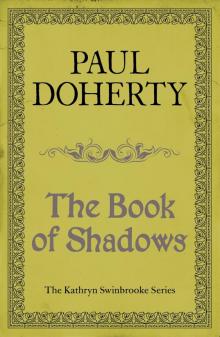 Book of Shadows
Book of Shadows The Merchant of Death
The Merchant of Death Dark Queen Waiting
Dark Queen Waiting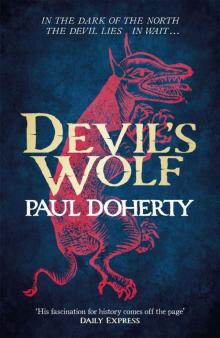 Devil's Wolf
Devil's Wolf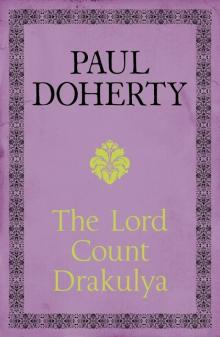 The Lord Count Drakulya
The Lord Count Drakulya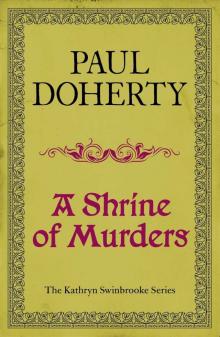 A Shrine of Murders
A Shrine of Murders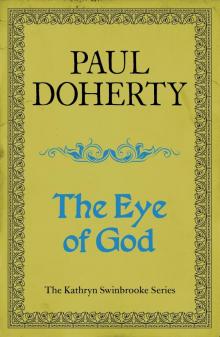 The Eye of God
The Eye of God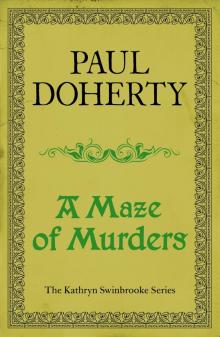 A Maze of Murders
A Maze of Murders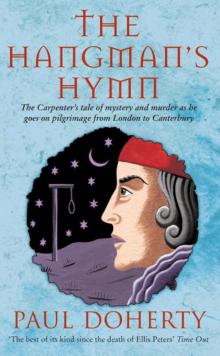 The Hangman's Hymn
The Hangman's Hymn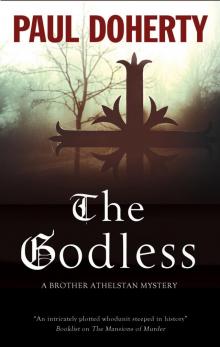 The Godless
The Godless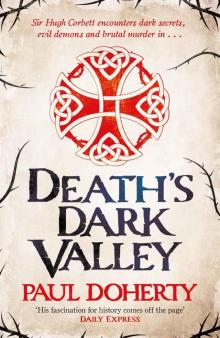 Death's Dark Valley
Death's Dark Valley Queen of the Night ar-4
Queen of the Night ar-4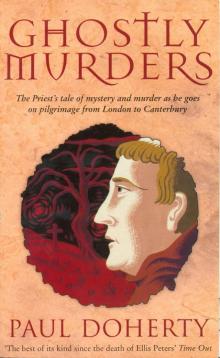 Ghostly Murders
Ghostly Murders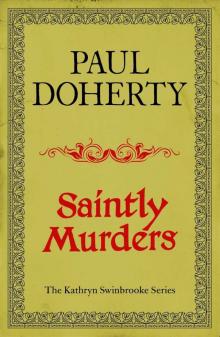 Saintly Murders
Saintly Murders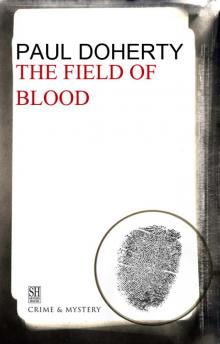 The Field of Blood
The Field of Blood Hugh Corbett 10 - The Devil's Hunt
Hugh Corbett 10 - The Devil's Hunt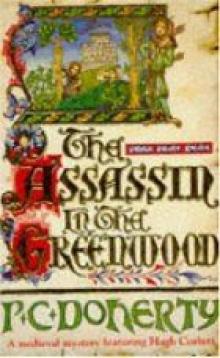 Assassin in the Greenwood hc-7
Assassin in the Greenwood hc-7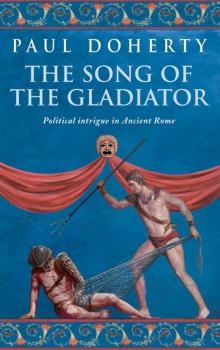 The Song of the Gladiator
The Song of the Gladiator Hugh Corbett 17 - The Mysterium
Hugh Corbett 17 - The Mysterium The Mask of Ra
The Mask of Ra An Evil Spirit Out of the West (Ancient Egyptian Mysteries)
An Evil Spirit Out of the West (Ancient Egyptian Mysteries)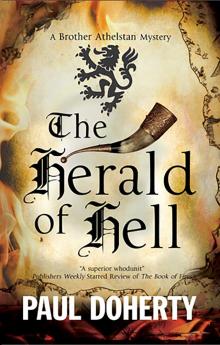 Herald of Hell
Herald of Hell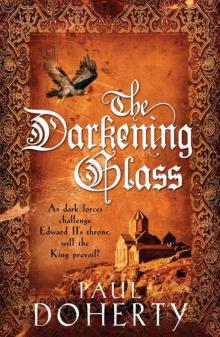 Mathild 03 - The Darkening Glass
Mathild 03 - The Darkening Glass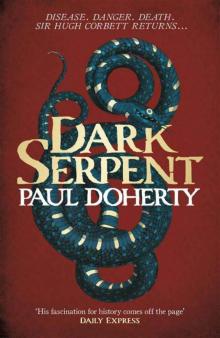 Dark Serpent (Hugh Corbett 18)
Dark Serpent (Hugh Corbett 18)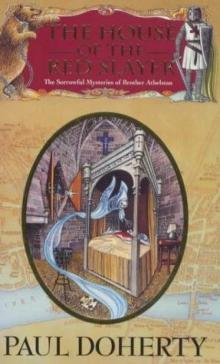 House of the Red Slayer smoba-2
House of the Red Slayer smoba-2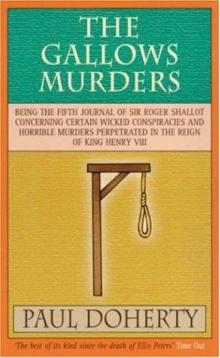 The Gallows Murders
The Gallows Murders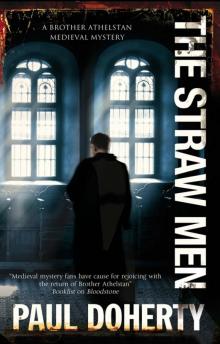 The Straw Men
The Straw Men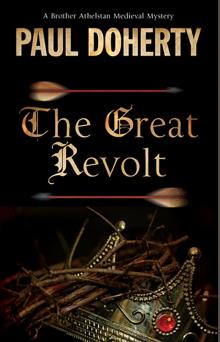 The Great Revolt
The Great Revolt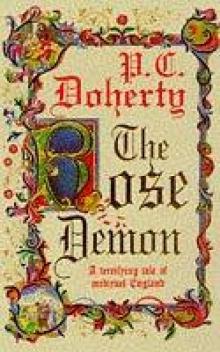 The Rose Demon
The Rose Demon By Murder's bright light smoba-5
By Murder's bright light smoba-5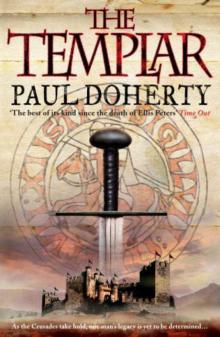 Templar
Templar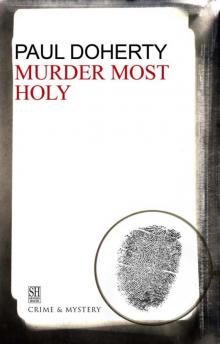 Murder Most Holy
Murder Most Holy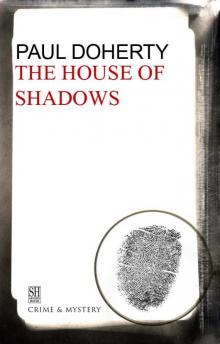 The House of Shadows
The House of Shadows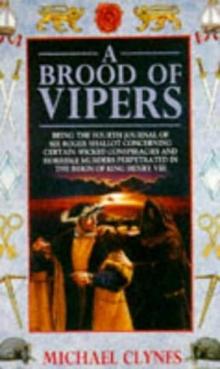 A Brood of Vipers srs-4
A Brood of Vipers srs-4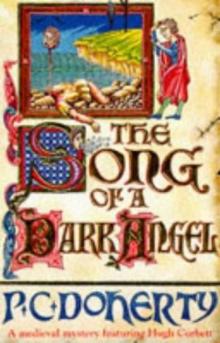 Song of a Dark Angel hc-8
Song of a Dark Angel hc-8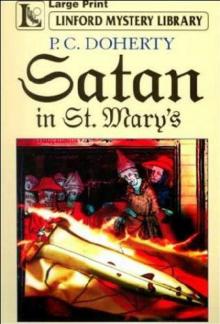 Satan in St Mary hc-1
Satan in St Mary hc-1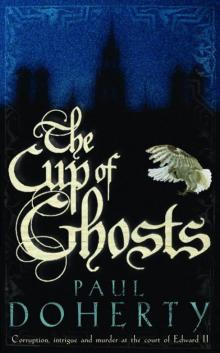 Mathilde 01 - The Cup of Ghosts
Mathilde 01 - The Cup of Ghosts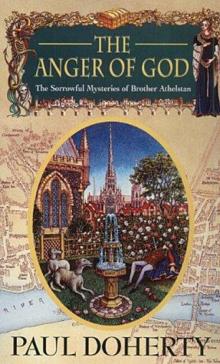 The Anger of God smoba-4
The Anger of God smoba-4 Isabella and the Strange Death of Edward II
Isabella and the Strange Death of Edward II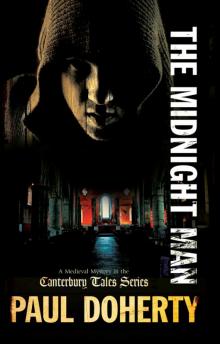 The Midnight Man ctomam-7
The Midnight Man ctomam-7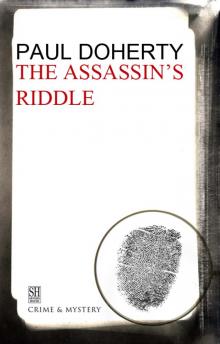 The Assassin's Riddle
The Assassin's Riddle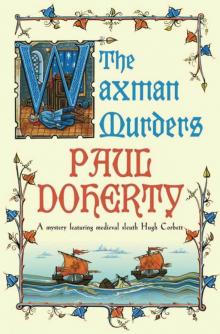 Hugh Corbett 15 - The Waxman Murders
Hugh Corbett 15 - The Waxman Murders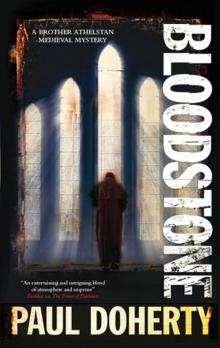 Bloodstone smoba-11
Bloodstone smoba-11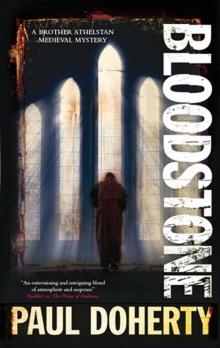 Bloodstone
Bloodstone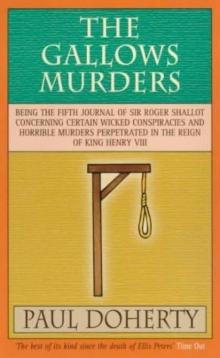 The Gallows Murders srs-5
The Gallows Murders srs-5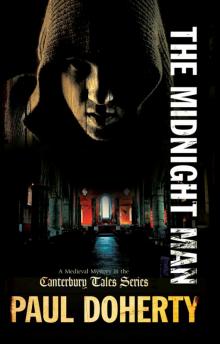 The Midnight Man
The Midnight Man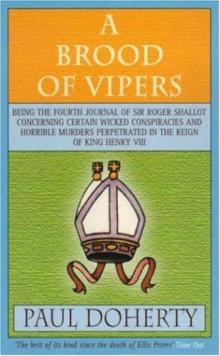 A Brood of Vipers
A Brood of Vipers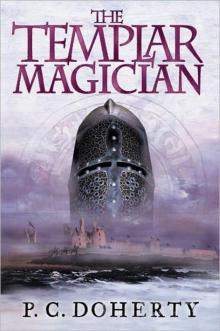 The Templar Magician
The Templar Magician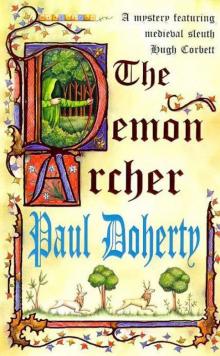 Hugh Corbett 11 - The Demon Archer
Hugh Corbett 11 - The Demon Archer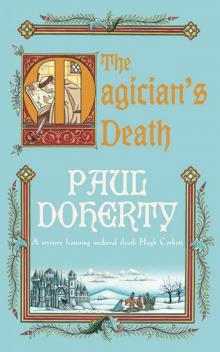 Hugh Corbett 14 - The Magician's Death
Hugh Corbett 14 - The Magician's Death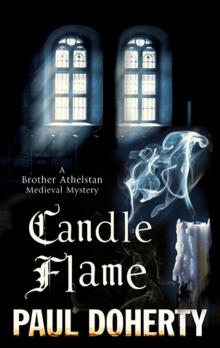 Candle Flame
Candle Flame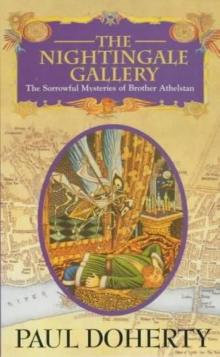 The Nightingale Gallery smoba-1
The Nightingale Gallery smoba-1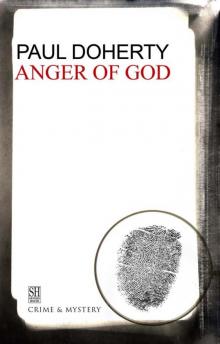 The Anger of God
The Anger of God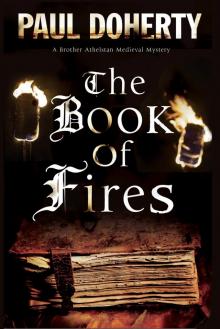 The Book of Fires
The Book of Fires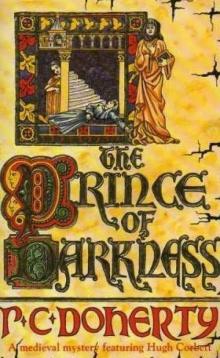 Prince of Darkness hc-5
Prince of Darkness hc-5 The House of Crows smoba-6
The House of Crows smoba-6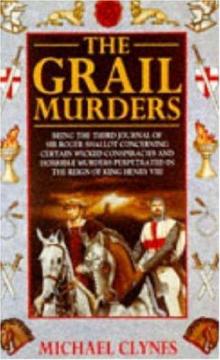 The Grail Murders
The Grail Murders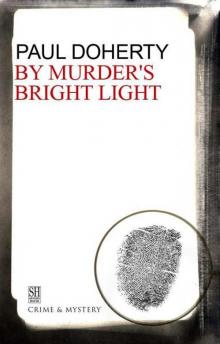 By Murder's Bright Light
By Murder's Bright Light House of the Red Slayer
House of the Red Slayer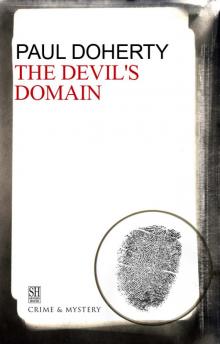 The Devil's Domain
The Devil's Domain The Relic Murders srs-6
The Relic Murders srs-6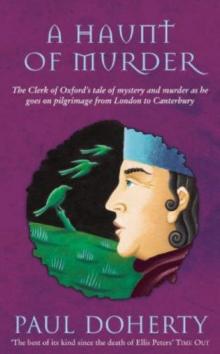 A haunt of murder ctomam-6
A haunt of murder ctomam-6 The Straw Men smoba-12
The Straw Men smoba-12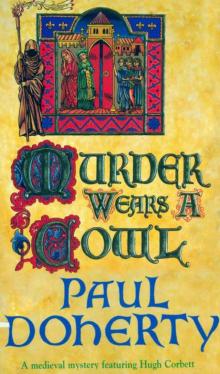 Hugh Corbett 06 - Murder Wears a Cowl
Hugh Corbett 06 - Murder Wears a Cowl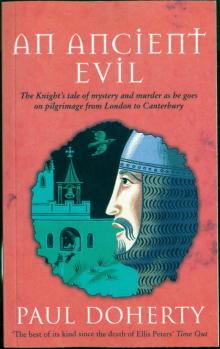 An Ancient Evil (Canterbury Tales Mysteries)
An Ancient Evil (Canterbury Tales Mysteries)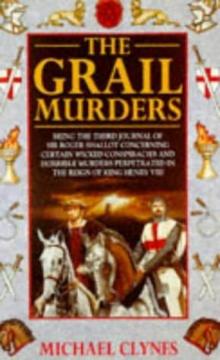 The Grail Murders srs-3
The Grail Murders srs-3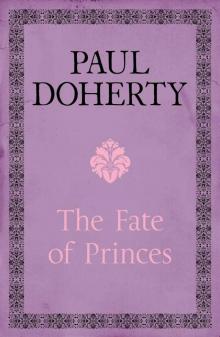 The Fate of Princes
The Fate of Princes The poisoned chalice srs-2
The poisoned chalice srs-2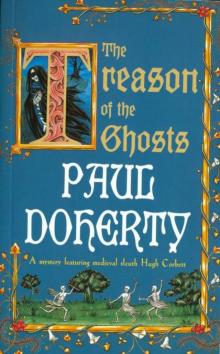 Hugh Corbett 12 - The Treason of the Ghosts
Hugh Corbett 12 - The Treason of the Ghosts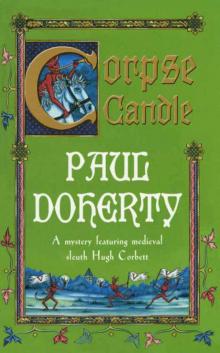 Hugh Corbett 13 - Corpse Candle
Hugh Corbett 13 - Corpse Candle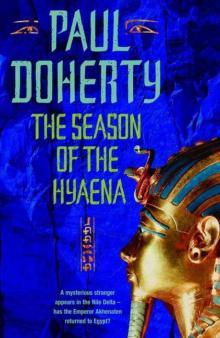 The Season of the Hyaena (Ancient Egyptian Mysteries)
The Season of the Hyaena (Ancient Egyptian Mysteries) The White Rose murders srs-1
The White Rose murders srs-1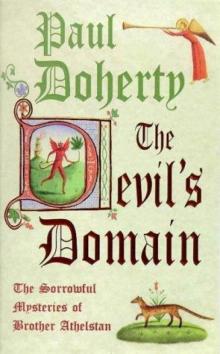 The Devil's domain smoba-8
The Devil's domain smoba-8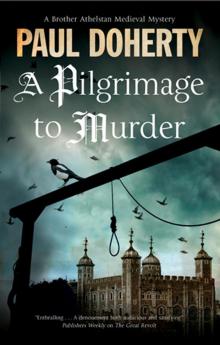 A Pilgrimage to Murder
A Pilgrimage to Murder Roseblood
Roseblood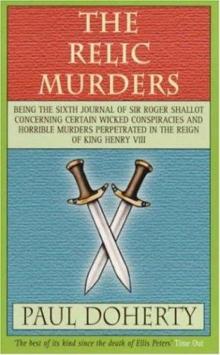 The Relic Murders
The Relic Murders The Assassin's riddle smoba-7
The Assassin's riddle smoba-7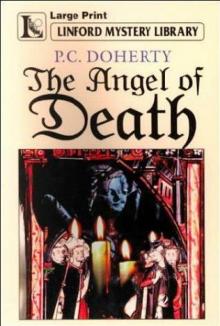 Angel of Death hc-4
Angel of Death hc-4 Dark Queen Rising
Dark Queen Rising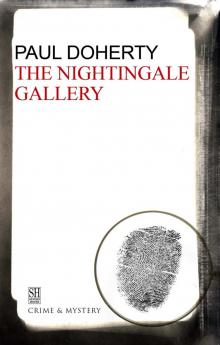 The Nightingale Gallery
The Nightingale Gallery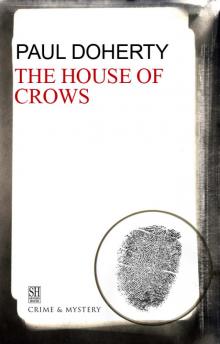 The House of Crows
The House of Crows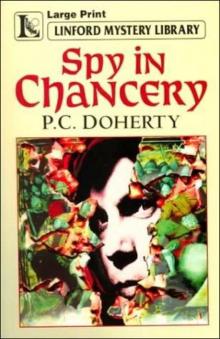 Spy in Chancery hc-3
Spy in Chancery hc-3